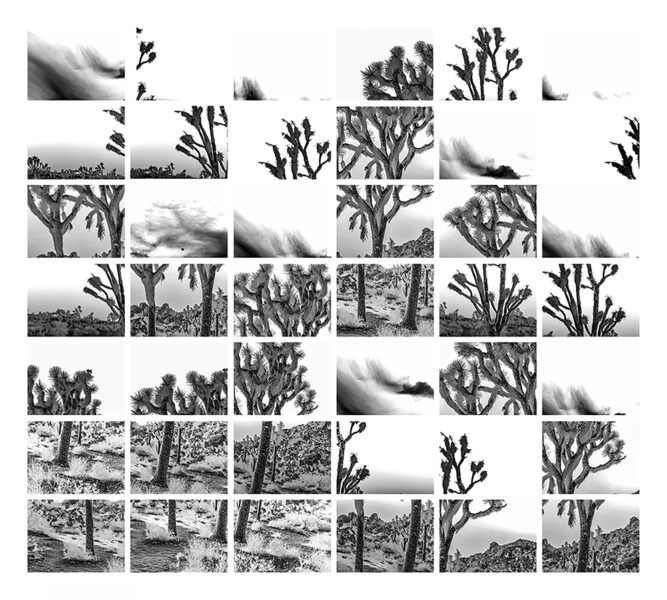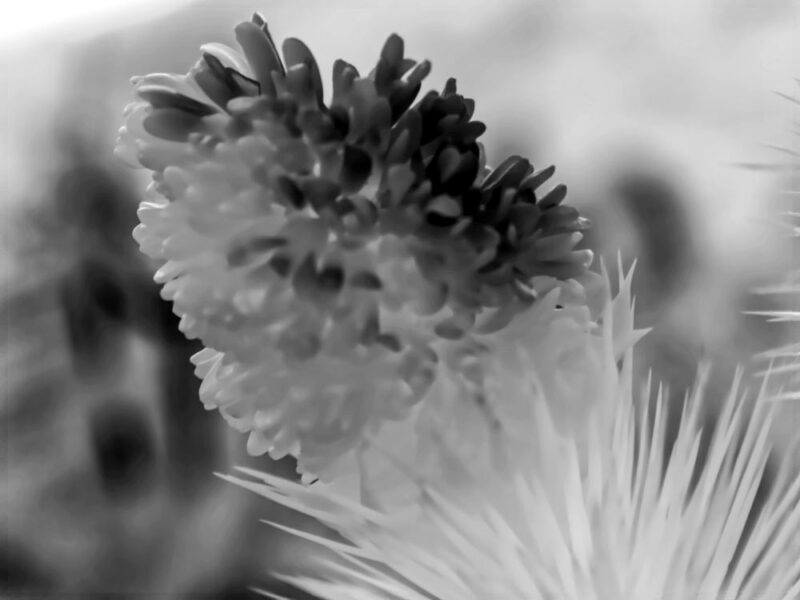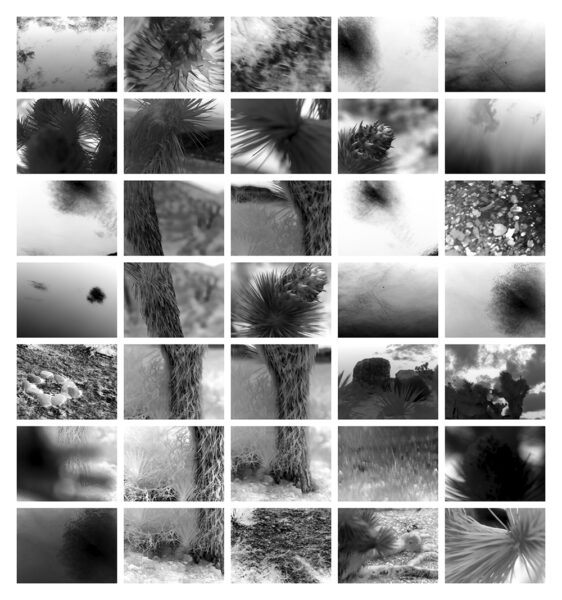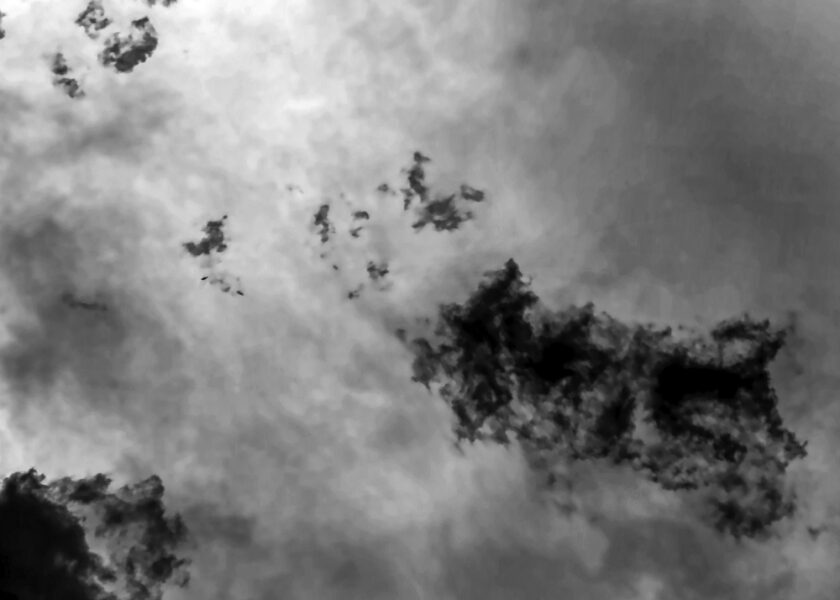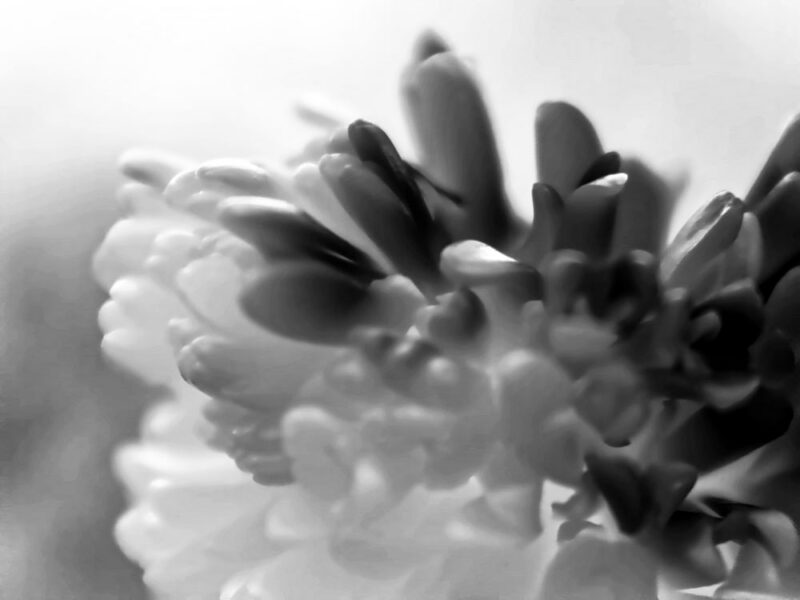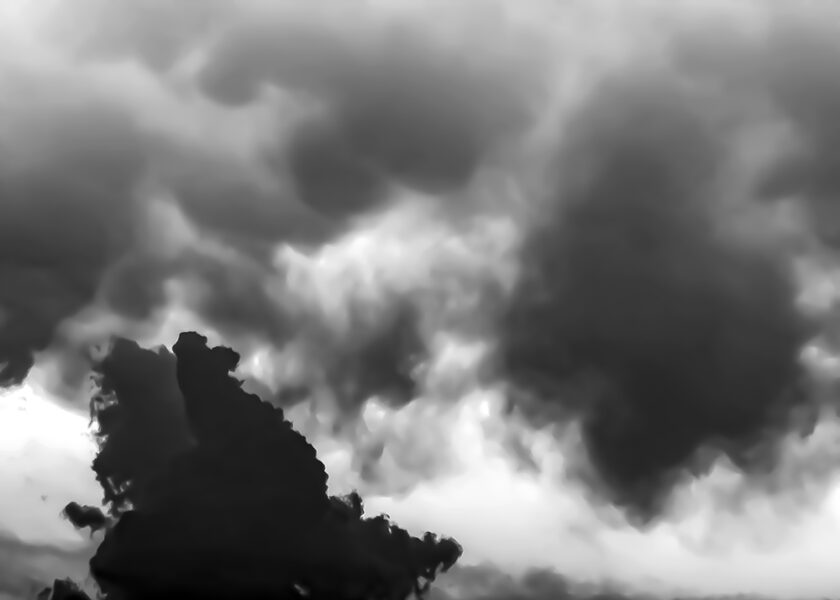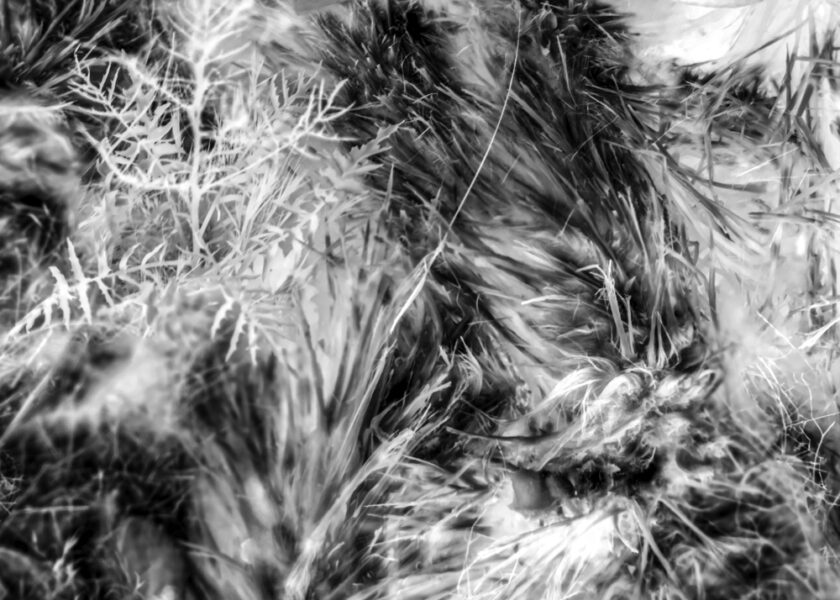In my ongoing project Heat: Joshua Trees of the American West, I capture photographs of the landscape in the western United States using thermal technology. Typically, high-resolution thermal cameras are used for surveillance, espionage and for the detection of chemicals, radiation, nuclear emissions, and explosive materials. It can also be used to detect heat leaks in homes or factories. I use thermal photography as a tool for my art to help envision the connections between science, technology, and our environment.
The thermal camera completely upends the traditional values of photography. Light is not the defining issue. Heat is the issue. We are seeing temperature. What we see and interpret initially as light is actually heat, and dark is cold, or the inverse, since I can set the values how I want on the camera.
I photograph Joshua trees with the thermal camera within their natural environments. From up close views of the textured bark to vast families of trees, you are forced to look and see them differently. The depth of field and three-dimensionality of the objects are often flattened. It’s disorienting.
These photographs spin on an axis of documentary and formalism, realism, and abstraction. And yet, I know that what may look like playful marks and strong tonal contrasts on the Joshua trees and land might really be there because the temperature is unusually hot. And what my mind sees as beauty is counter to the reality of the situation.
I don’t feel the need for the photos to explain themselves. Instead, I want them to hold the viewer’s attention and simply be experienced. The summer of 2023 was Earth’s hottest since global records began. And 2023 is on track to be the hottest year on record. What better lens than that of the thermal camera to see the world right now? By presenting photographs that document heat of the trees within their natural environment, perhaps others will consider the current threats directly related to heat—climate change and fires— that contribute to pushing the species toward extinction. My hope is that the work will contribute to a threshold of awareness of the unintended consequences of human activity on the planet. And miraculously, for that acknowledgment to lead to spurring accountability with the land at a time of environmental crisis.
